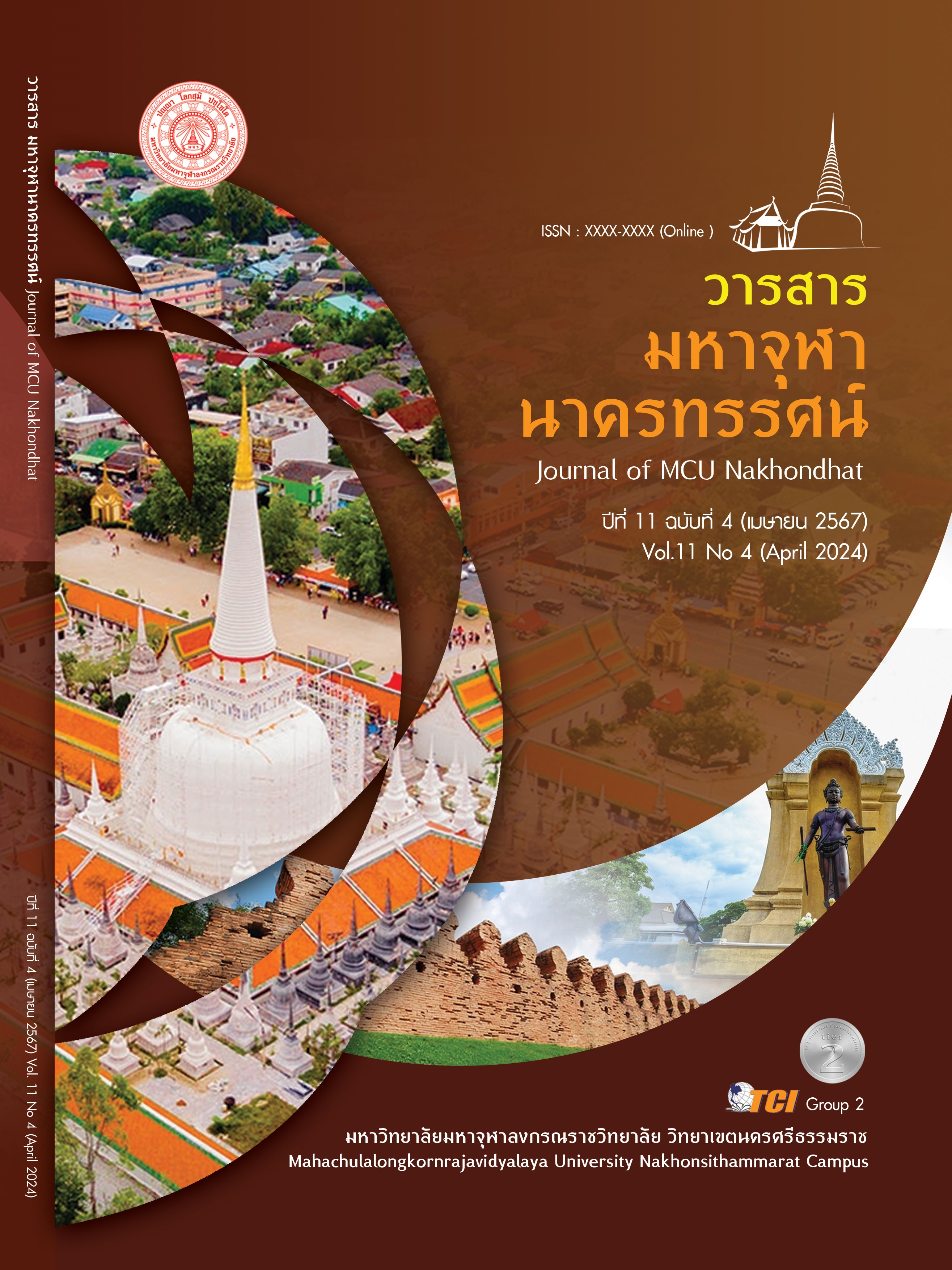AN EVALUATION OF THE VOLUNTEER BEHAVIOR PROJECT OF STUDENT AT DHURAKIT PUNDIT TECHNOLOGY COLLEGE BY USING THE CIPP MODEL
Main Article Content
Abstract
This research aims to assess the contextual aspects, input factors, process dimensions, and outcomes of the volunteer behavior of undergraduate students at the College of Industrial Technology, utilizing the CIPP Model as a quantitative research method. The assessment of student volunteer behavior includes the following components: 1) Context, 2) Input factors,
3) Process, comprising planning, implementation, monitoring and evaluation, improvement, and development, and 4) Outcomes. The study population consists of undergraduate students at the College of Industrial Technology, utilizing a targeted sampling approach with a sample size of 275 individuals. Research tools employed include a structured questionnaire utilizing a Likert scale with five levels, constructed based on the CIPP Model evaluation framework. The questionnaire is divided into two parts: Part 1 collects personal information of students, while Part 2 gathers data on the evaluation of student volunteer behavior programs. Data collection involves distributing and retrieving questionnaires from students. Statistical methods utilized for data analysis include descriptive statistics. Findings indicate a predominance of male students (62.90%) compared to female students (37.10%), with the highest enrollment in the second year of vocational education (40.01%), primarily in the automotive department (31.28%). Evaluation of student volunteer behavior across all four dimensions of the CIPP Model reveals that input factors received the highest evaluation scores, followed by process, outcomes, and context, respectively.
Article Details

This work is licensed under a Creative Commons Attribution-NonCommercial-NoDerivatives 4.0 International License.
References
เกียรติศักดิ์ แสงอรุณ. (2551). แนวทางการพัฒนาจิตสำนึกสาธารณะสำหรับเยาวชนไทย : กรณีศึกษากลุ่มและเครือข่ายเยาวชนที่ทำงานด้านจิตสำนึกสาธารณะ. ใน วิทยานิพนธ์ครุศาสตรมหาบัณฑิต สาขาวิชาพัฒนศึกษา. จุฬาลงกรณ์มหาวิทยาลัย.
โกวิทย์ พวงงาม. (2550). การปกครองท้องถิ่นไทย. กรุงเทพมหานคร: วิญญูชน.
ณัฐวรรณ แย้มละมัย และสุณี หงส์วิเศษ. (2561). การประเมินผลโครงการส่งเสริมสุขภาพผู้สูงอายุเทศบาลตำบลตะเคียนเตี้ย อำเภอบางละมุง จังหวัดชลบุรี. วารสารมหาวิทยาลัยนครพนม, 8(3), 17-25.
ธเนศ ขำเกิด. (2552). การประเมินผลการดำเนินงานโครงการพัฒนาโครงสร้างพื้นฐาน. วารสารวิทยาจารย์, 88(2), 18-20.
ธัญญาสิริ ธันยสวัสดิ์ และคณะ. (2561). พฤติกรรมจิตอาสาและปัจจัยเกี่ยวกับพฤติกรรมจิตอาสาของนักเรียนอาชีววิทยาลัยจุลมณีอุทุมพรพิสัย จังหวัดศรีสะเกษ. เรียกใช้เมื่อ 12 มกราคม 2567 จากhttp://rtunc 2020.rtu.ac.th/Production/proceeding/pdf/Oral%20Presentation/Oral4ED/5ED_O29.pdf
บุญชม ศรีสะอาด. (2556). วิธีการทางสถิติสำหรับการวิจัย เล่ม 1. (พิมพ์ครั้งที่ 5). กรุงเทพมหานคร: สุวีริยาสาส์น.
มานพ จิตแม้น. (2565). ศึกษาการประเมินโครงการพัฒนาแหล่งเรียนรู้เพื่อส่งเสริมการจัดการเรียนรู้ที่มีประสิทธิภาพ โรงเรียนเทศบาลท่าตูม อำเภอท่าตูม จังหวัดสุรินทร์. วารสารวิจัยเพื่อการปฏิรูปการเรียนรู้, 5(2), 1-16.
วรัชยา ประจำ. (2564). การประเมินโครงการส่งเสริมคุณธรรมจริยธรรมนักเรียนในโรงเรียน คุณธรรม สพฐ โรงเรียนอนุบาลห้วยทับทัน โดยใช้ CIPP Model. วารสารวิชาการมหาวิทยาลัยราชภัฏศรีสะเกษ, 15(3), 102-123.
สมหวัง พิธิยานุวัฒน์. (2551). วิทยาการประเมินศาสตร์แห่งคุณค่า. (พิมพ์ครั้งที่ 4). กรุงเทพมหานคร: สำนักพิมพ์แห่งจุฬาลงกรณ์มหาวิทยาลัย.
สำนักงานคณะกรรมการพัฒนาการเศรษฐกิจและสังคมแห่งชาติ. (2559). แผนพัฒนาเศรษฐกิจและสังคม แห่งชาติ ฉบับที่ 12 พ.ศ. 2560-2564. เรียกใช้เมื่อ 12 มกราคม 2567 จาก https://www.nesdc.go.th/ewt_dl _link.php?nid=6422
อุบลวรรณ นิยมจันทร์. (2565). การประเมินผลการดำเนินโครงการของกระทรวงสาธารณสุขภายใต้แผนงานบูรณาการเตรียมความพร้อมรองรับสังคมสูงวัย พ.ศ. 2563 แนวทางที่ 4 พัฒนาระบบและกลไกการดูแลสุขภาพและการคุ้มครองทางสังคมของผู้สูงอายุ. วารสารปัญญาปณิธาน มหาวิทยาลัยมหาจุฬาลงกรณราชวิทยาลัย วิทยาเขตหนองคาย, 7(2), 175-188.


